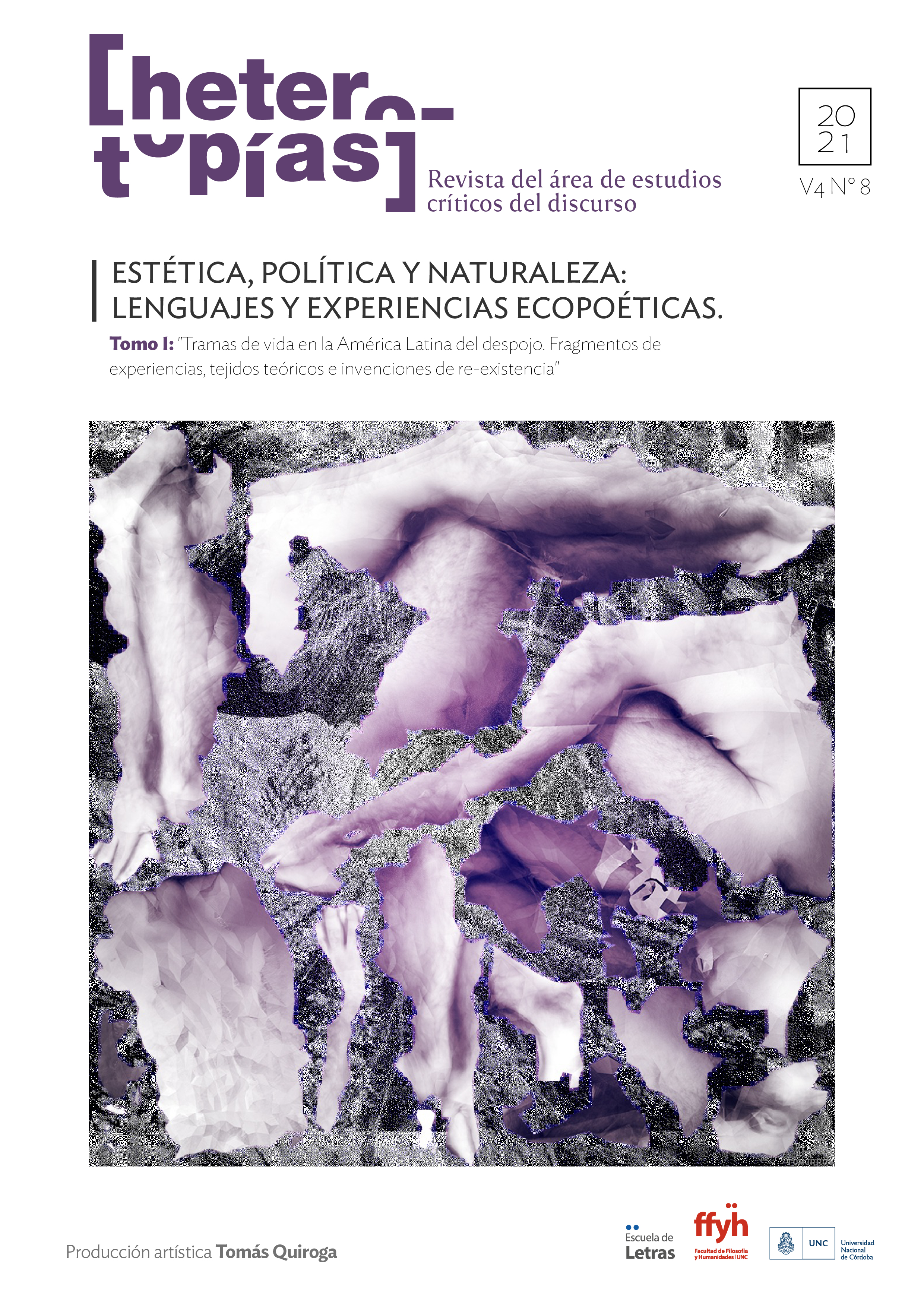Nightmare machines. Living on the borders.
Main Article Content
Abstract
Global warming has unleashed a maelstrom of high temperatures, mega-droughts, catastrophic floods, polluted rivers and acidified oceans. Due to this, millions of people are forced to leave their territories haunted by hunger and lack of opportunities.Then there are wars, drug trafficking and the multiple forms of violence. This text aims to think about migrant movements mainly in Latin America and the way in which the languages of contemporary art account for them (fotographs, cinema, installations, performances, popular art). Linked to the Lotmanian concept of Semiosphere, we will take the theoretical category of Border, its discussions and its possibilities of reflection on current problems.
Downloads
Article Details

This work is licensed under a Creative Commons Attribution-NonCommercial-ShareAlike 4.0 International License.
Those authors who have publications with this journal, accept the following terms: Those authors who have publications with this journal, accept the following terms:
a. The authors will keep their copyright and guarantee to the journal the right of first publication of their work, which will be simultaneously subject to the Creative Commons Attribution - Non-Commercial - Share Alike (by-nc-sa) Attribution License; no commercial use of the original work or any derivative works is allowed, the distribution of which must be done with a license equal to the one that regulates the original work.
b. Authors may adopt other non-exclusive license agreements for the distribution of the published version of the work (e.g., deposit it in an institutional telematic archive or publish it in a monographic volume) provided that the initial publication in this journal is indicated.
c. Authors are allowed and recommended to disseminate their work through the Internet (e.g. in institutional telematic archives or on their website) before and during the submission process, which may lead to interesting exchanges and increase the number of citations of the published work. (See The effect of open access).
References
Anzaldúa, G. (1999). Borderlands/La frontera. The new mestiza. San Francisco: Aunt Lute Books.
Argumedo, A. (2020). Presentación. En: Klein, N. Los años de reparación (pp. 7-22). Buenos Aires: CLACSO.
Barei, S. (2012). Culturas en conflicto. Córdoba: Ferreira Editor.
Colón, C. (1982). Relaciones de viajes. En Consuelo Varela (comp). Textos y documentos completos. (Pp.97) Madrid: Alianza.
Comunidad Comechingona Pluma Blanca (2021) “Comunicado de prensa”. Sitio de la Comunidad Comechingona Pluma Blanca. Página Facebook oficial. Publicado el 9 de agosto de 2021.
García Canclini, N. (2001[1990]). Culturas híbridas. Estrategias para entrar y salir de la Modernidad. México: Penguin Ramdom House Mondadori.
García Uriburu, N. (1973). Manifiesto. En: Colección Malba. Disponible en: https://coleccion.malba.org.ar/portfolio-manifiesto/
García Uriburu, N. Reportaje en https://noticias.usal.Edu.ar. 02/07/2021.
Lotman, J. (1996 [1984]). La semiosfera I. Semiótica de la Cultura y del Texto. Madrid: Cátedra.
Viveiros de Castro, E. (2013[2008]). La mirada del jaguar. Buenos Aires: Tinta limón.
Espinosa, M. (2020). “Violencia en el Chaco salteño. Notas críticas sobre la situación de Pueblos Originarios”. En: Revista Alfilo. Disponible en: https://ffyh.unc.edu.ar/alfilo/violencia-en-el-chaco-salteno-notas-criticas-sobre-la-situacion-de-los-pueblos-originarios/
Ribas Mateos, N. (ed.) (2011). El río Bravo Mediterráneo. Las regiones fronterizas en épocas de globalización. Barcelona: Bellaterra.
Sassen, S. (2015) Expulsiones. Brutalidad y complejidad en la economía global. Buenos Aires: Katz.
Spivak, G. (2013[1998]). En otras palabras, en otros mundos. Ensayos sobre política cultural. Buenos Aires: Paidos.
Tavares, P. (2019). En las ruinas de la selva. En: Speranza, G. Futuro Presente (pp. 53-66). Buenos Aires: Siglo XXI.
Zaffaroni, E. (2012). La Pachamama y el humano. Buenos Aires: Madres de Plaza de Mayo-Colihue.
